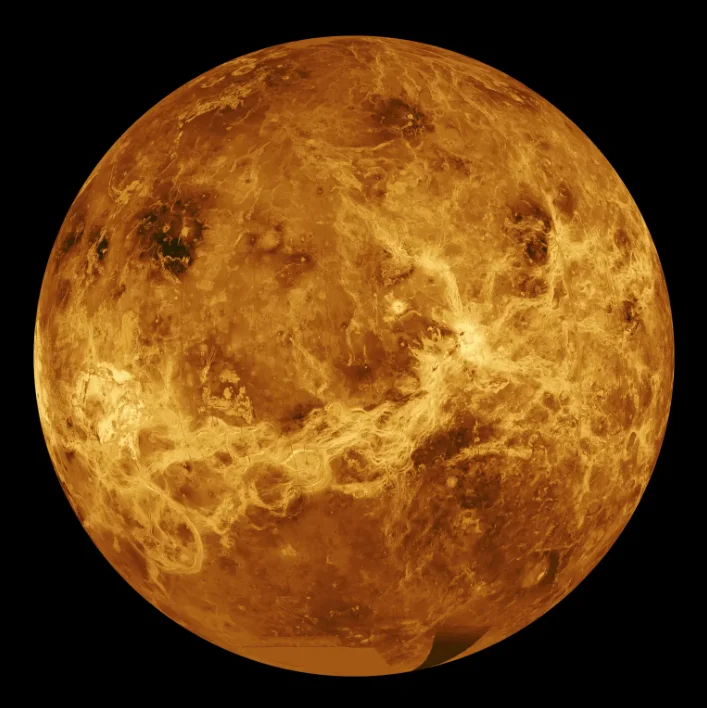
Venus’s Secrets Unveiled: Surprisingly Thin Crust and Active Geology Re-Examined
Venus, Earth's enigmatic twin, continues to surprise scientists. Recent studies, fueled by reanalyzed data from NASA's Magellan mission and new research, challenge the long-held belief that Venus is a geologically dead planet. Instead, evidence suggests a surprisingly thin crust and ongoing internal activity are shaping its surface, offering tantalizing clues about its past and potentially early Earth's processes.
Why is this important? Understanding Venus's geology could shed light on why it diverged so dramatically from Earth, despite their similar size and initial conditions. This knowledge is crucial for understanding the evolution of rocky planets in general, and could even provide insights into our own planet's early history.
Thin Crust, Big Implications: A new NASA-funded study published in *Nature: Communications* posits that Venus's crust may be surprisingly thin, ranging from just 25 to 40 miles (40 to 65 kilometers) deep. This is according to models and simulations of Venus’s interior, a surprising result. According to Justin Filiberto (NASA-JSC Astromaterials Research and Exploration Science Division), as quoted in a recent press release, "It turns out that, according to our models, as the crust grows thicker, the bottom of it becomes so dense that it either breaks off and becomes part of the mantle or gets hot enough to melt." This process could drive a recycling of material in the interior, fueling volcanic activity.

Coronae: Windows into Venus's Interior: Another recent study published in *Science Advances*, focusing on structures called coronae, large, ring-shaped features on Venus's surface, offers further evidence of geological activity. Researchers simulated their formation scenarios and compared data with Magellan.
These coronae, thought to be caused by plumes of hot material pushing against the surface from the mantle, may be actively being shaped with hot material rising from below. Anna Gülcher, a planetary scientist at the University of Bern in Switzerland who co-led the study, stated, "We can now say there are most likely various and ongoing active processes driving their formation. We believe these same processes may have occurred early in Earth's history."

This recent research confirms that activity limits the crust-mantle boundary to a depth of 25-40 miles (40 to 65 kilometers) at most… a surprisingly thin result. For context, we know that Earth’s crust is on average 3 to 44 miles (5-70 kilometers) thick (that’s oceanic, versus continental).
Future Missions Hold the Key: While these findings are exciting, much remains unknown about Venus's interior. Future missions, including the European Space Agency's EnVision mission and NASA's VERITAS and DAVINCI missions (although their future faces uncertainty due to proposed budget cuts), are poised to provide more detailed data about the planet's surface, atmosphere, and internal structure.
NASA’s VERITAS mission (Venus Emissivity, Radio science, InSAR, Topography, and Spectroscopy) will be launching in 2031 to uncover the origins of the Coronae. Scientists can look for high-resolution data from the spacecraft. The VERITAS gravity maps of Venus will boost the resolution by at least a factor of two to four, depending on location.
These missions promise a level of detail that could revolutionize our understanding of Venus's geology and its implications for early Earth.
A Deeper Mystery: What researchers in this study propose is a mechanism of crust metamorphism, coupled with rock density and melting cycles. Researchers ran models and simulations of the interior of Venus and came up with a surprising result: this activity limits the crust-mantle boundary to a depth of 25-40 miles (40 to 65 kilometers) at most… a surprisingly thin result.
While these studies provide compelling evidence of ongoing geological activity on Venus, many questions remain. Why did Venus and Earth take such divergent evolutionary paths? What are the specific mechanisms driving the recycling of material within Venus's interior? Only future exploration and research can fully unravel the secrets of our sister planet.
What do you think about the possibility of Venus still being geologically active? Leave your thoughts and comments below!